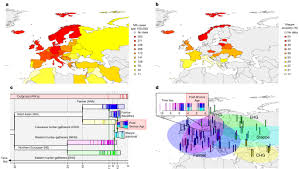A silent warning? Microplastics found in every human placenta, reveals new study

A recent research conducted by the University of New Mexico Health Sciences has uncovered a concerning reality: microplastics are present in every human placenta. The study, published on February 17 in Toxicological Sciences, highlighted the pervasive nature of microplastics in human placentas, raising important questions about potential health impacts.
Led by Matthew Campen, PhD, a team of researchers meticulously analysed 62 placenta samples, utilising techniques to quantify microplastic concentrations.
Astonishingly, every sample tested positive for microplastics, with concentrations ranging from 6.5 to 790 micrograms per gram of tissue.
Campen voiced his apprehension regarding the implications of escalating microplastic exposure, stating, "If the dose keeps going up, we start to worry. If we’re seeing effects on placentas, then all mammalian life on this planet could be impacted. That’s not good."
Method used in the study
The methodology employed in the study involved a multi-step process. Initially, the samples underwent saponification to break down fats and proteins, followed by ultracentrifugation to isolate plastic residues.
Pyrolysis, a technique involving intense heat, was then utilised to characterise the composition of the plastic fragments.
Marcus Garcia, PharmD, a key member of the research team, pointed out the significance of their novel approach, stating, "We can take it to that next step to be able to adequately quantify it and say, ‘This is how many micrograms or milligrams,’ depending on the plastics that we have."
The proliferation of plastics has reached unprecedented levels, with production skyrocketing since 1950s. Despite their initial usefulness, the persistence of plastics in the environment poses severe ecological challenges. Plastic waste, especially single-use plastics like bags, bottles, and packaging materials, has inundated landfills, oceans, rivers, and even remote wilderness areas.
Their versatility, durability, and affordability have led to their widespread use across various industries, revolutionising packaging, construction, healthcare, transportation, and numerous other sectors. However, this convenience comes with a significant cost - the alarming accumulation of plastic waste globally.
Garcia highlighted the diverse pathways through which microplastics enter ecosystems, affecting not only humans but also animals and plants.
“That ends up in groundwater, and sometimes it aerosolizes and ends up in our environment,” Garcia said adding, “We’re not only getting it from ingestion but also through inhalation as well. It not only affects us as humans, but all off our animals – chickens, livestock – and all of our plants. We’re seeing it in everything.”
Watch | Choose EVs to boost children's health, says study
Campen also underscored the longevity of certain plastics, with half-lives spanning decades to centuries. Moreover, he expressed concern over the potential health ramifications as microplastics may interfere with biological processes.
The presence of microplastics in placentas is particularly concerning as it is a vital organ developing over a mere eight-month period. “Other organs of your body are accumulating over much longer periods of time," Campen pointed out.
(With inputs from agencies)


 United Kingdom
United Kingdom Argentina
Argentina  Australia
Australia  Austria
Austria  Brazil
Brazil  Canada
Canada  Germany
Germany  Ireland
Ireland  Italy
Italy  Malaysia
Malaysia  Mexico
Mexico  New Zealand
New Zealand  Poland
Poland  South Africa
South Africa  United States
United States 






































